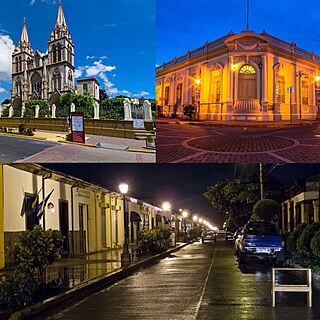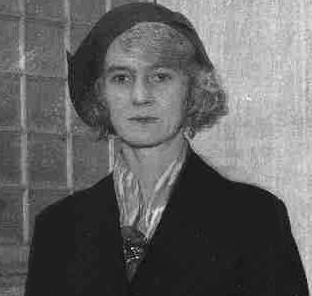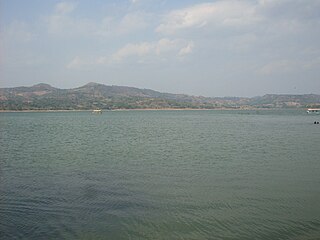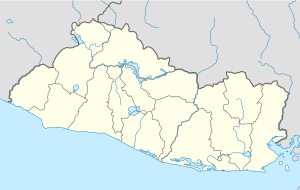
El Salvador is a country in Central America. Situated at the meeting point of three tectonic plates, it is highly seismologically active and the location of numerous earthquakes and volcanic eruptions. The country has a tropical climate.

San Salvador is the capital and the largest city of El Salvador and its eponymous department. It is the country's political, cultural, educational and financial center. The Municipality of San Salvador has 209,633 inhabitants (2020). The Metropolitan Area of San Salvador, which comprises the capital itself and 13 of its municipalities, has a population of 2,404,097. The urban area of San Salvador has a population of 1,600,000 inhabitants.

San Salvador is a department of El Salvador in the west central part of the country. The capital is San Salvador, which is also the national capital. The department has North of the Rio Lempa Valley, the "Valle de las Hamacas" and a section of Lake Ilopango. Some of the department's cities that are densely populated are: San Salvador, Ciudad Delgado, Mejicanos, Soyapango, Panchimalco and Apopa. The department covers an area of 886.2 square kilometres (342.2 sq mi) and the last census count in 2017 reported 2,404,097 people. It was classified as a department on June 12, 1824. During the time of the colony, the department was the San Salvador Party, from where territory was taken to make the departments of Chalatenago, La Libertad, Cuscatlán and La Paz. This department produces beans, coffee, sugar cane, etc. for agriculture, on the other hand San Salvador Department holds many headquarters for banking companies in El Salvador and Central America, and for many communication services, also the headquarters of the electric companies are located in the San Salvador Department, last years these companies took a step and started exporting electricity to all Central America. The current mayor of the department is Ernesto Muyshondt (2015–2019)

Apopa is a municipality in the San Salvador department of El Salvador. Probably the seventh biggest city in El Salvador with a little more than 150,000 people, the city has now collided with Soyapango and San Salvador, making it part of the Great San Salvador Metro.

Ayutuxtepeque is a municipality in the San Salvador department of El Salvador. It is one of the nine municipalities that make up the San Salvador Metropolitan Area (AMSS). The name of the municipality means "Armadillos Hill(or Mountain)"

Mejicanos is a San Salvador suburb in the San Salvador department of El Salvador.

San Martín is a municipality in the San Salvador department of El Salvador. According to the 2007 Population and Housing Census, it has 72,758 inhabitants. The municipality is limited by San José Guayabal and Oratorio de Concepción to the North; San Bartolomé Perulapía and San Pedro Perulapán to the East; by Ilopango and the Lake of Ilopango to the South; and to the West by Tonacatepeque. For its administration it is divided into 8 cantons and 37 hamlets. Its main river is the Chunchucuyo; in terms of its orographyits main elevations are Las Delicias, Chuchutepeque, La Tigra and Teguantepeque hills. Its climate is warm and belongs to the type of hot earth and its annual rainfall amount varies between 1,750 and 1970 mm. The vegetation is constituted by humid subtropical forest. The locality covers an area of 55.8 km2 and the headland has an elevation of 725.0 meters above sea level. The municipality belongs to the Metropolitan Area of San Salvador.
Tonacatepeque is a municipality in the San Salvador department of El Salvador. It has a population of 90,896 inhabitants according to the 2007 Census. This makes this municipality twelfth largest in terms of population in El Salvador.

Antiguo Cuscatlán(colloquially known as Antiguo) is a municipality in the La Libertad department of El Salvador, and its eastern tip lays in San Salvador Department part of the Metropolitan Area of San Salvador, southwest of San Salvador and southeast of Santa Tecla. The population was 48,027 at the 2010 census. Antiguo Cuscatlán can be translated as Old Jeweled City: Antiguo means ancient or old in Spanish, and Cuscatlán means jeweled city in Nahuat. The city used to be the capital of the Pipil or Cuzcatecs, before the Spanish conquest of the New World.

Santa Tecla is a city in the La Libertad department of El Salvador. It is the capital of the department of La Libertad.

Lake Ilopango is a crater lake which fills an 8 by 11 km volcanic caldera in central El Salvador, on the borders of the San Salvador, La Paz, and Cuscatlán departments. The caldera, which contains the second largest lake in the country and is immediately east of the capital city, San Salvador, has a scalloped 100 m (330 ft) to 500 m (1,600 ft) high rim. Any surplus drains via the Jiboa River to the Pacific Ocean. The local military airbase, Ilopango International Airport, has annual airshows where international pilots from all over the world fly over San Salvador City and Ilopango lake.

Nueva Esparta is a municipality in the northeasternmost zone of El Salvador, inside La Unión Department. The municipality is politically divided into the central Pueblo Nueva Esparta, six outlying canton communities and 31 caserios.

The Metropolitan Area of San Salvador is a metropolitan area formed by San Salvador, the capital of El Salvador, and thirteen of its surrounding municipalities. It was instituted in 1993 through Legislative Decree No. 732 of the Law on Territorial Development and the Metropolitan Area of San Salvador and neighbouring municipalities. The Act defines that, based on their urban development, these cities form a single urban unit.
The municipal districts of San Salvador, the capital city of El Salvador, are naturally delimited by the Acelhuate River on the east, the San Jacinto Hill on the south east, the lower highlands of the Balsam Range on the South, El Picacho Mountain and the Bicentennial Park on the West, and North by the San Antonio River. The municipality is further subdivided into Districts governed by the municipal mayor and by a district board. There are seven districts in San Salvador, districts 1-6 and the Historic Downtown.

The final offensive of 1989, also known as the ofensiva hasta el tope, was the major engagement of the Salvadoran Civil War. The battle, fought between the Farabundo Martí National Liberation Front Marxist guerrilla and the Salvadoran government, lasted from 11 November to early December 1989. Sometimes referred to as "Ofensiva fuera los fascistas. Febe Elizabeth vive", in honor of an assassinated union leader, it was the most brutal confrontation in the entire conflict, amounting for seventeen percent of the total casualties in ten years of warfare.

Alice Lardé de Venturino was a Salvadoran poet and writer. Internationally recognized for her lyric poems, Lardé also published scientific works. She has been recognized by the Legislative Assembly of El Salvador and the government of Chile, both of whom have renamed public streets and offices in her name.

The Cerrón Grande Reservoir, also known locally as Lake Suchitlán, is a reservoir in northern El Salvador and the largest body of fresh water in the country. The reservoir was filled between 1973 and 1976, subsequent to the construction of the Cerrón Grande Hydroelectric Dam. The Cerrón Grande Reservoir is among the most polluted bodies of fresh water in Central America.
The 1965 San Salvador earthquake occurred at 04:01 in the morning on May 3, 1965. It had a moment magnitude of 5.9 and a maximum Mercalli intensity of VIII (Severe). The shock caused severe damage to El Salvador's capital city, San Salvador. The town of Ilopango, Soyapango, and Delgado was also hard hit. The earthquake was the most destructive to affect the city prior to the 1986 earthquake.

















